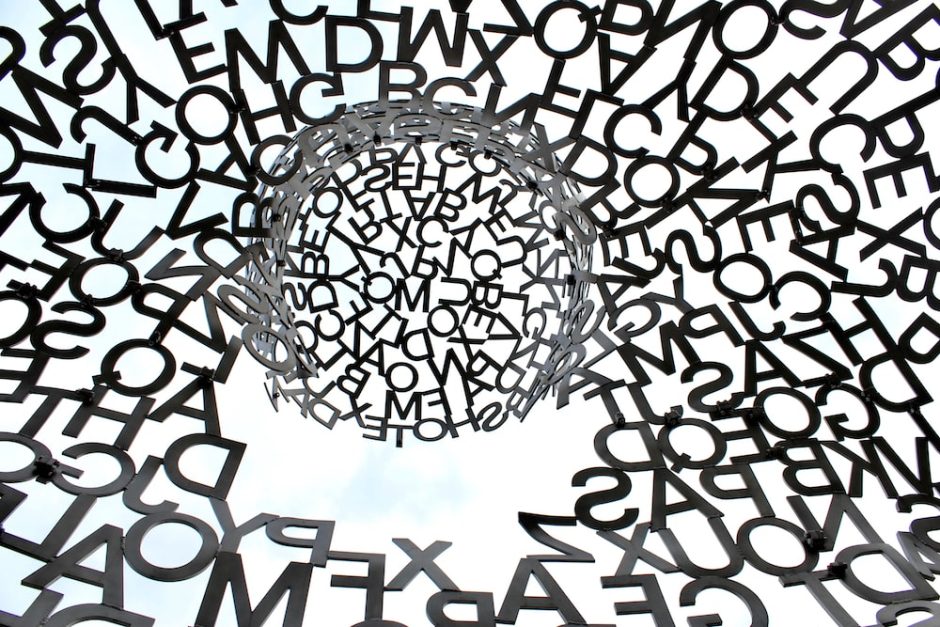I took up the opportunity to complete the Made by Dyslexia training in an effort to broaden my professional understanding of dyslexia, in connection with my interest in the science of reading and the acquisition of vocabulary.
Following some sage advisory signposts, I planned to take a cautious approach. Making notes as I progressed through the course, it was not too long before I bumped into those signposts. Hence I have tried to clearly label both the Made by Dyslexia training and post training research notes.
Dyslexia Awareness: Big picture
…as many as 1 in 5 people and is a genetic difference in an individual’s ability to learn and process information.
Dyslexia is the most common learning difference. 10-20% of the population has dyslexia (representing 80–90 percent of all those with learning disabilities).
Made by Dyslexia
I am keen to get to the research behind those figures. Furthermore, it is important we do not falsely give the impression of a dyslexia dichotomy when the reality is a dyslexia continuum.
The Idaho Dyslexia Handbook reference Wagner et al., (2020) suggesting that up to 20% of all students have some characteristics of dyslexia. Indeed Wagner et al., (2020: p345) suggest that the prevalence of dyslexia is better represented as a distribution that varies as “a function of severity as opposed to any single-point estimate.”
In a very recent meta-analysis Hall et al., (2022:) report a “word reading accuracy more than 1.5 standard deviations below the mean, estimates of dyslexia’s prevalence in the population are roughly 7% (Peterson & Pennington, 2012). The questions, who decides 1.5 sd measure?
A Harvard Graduate Schools of Education report highlights that “the most common reading disability, affects between 5 and 10 percent of the population.”
Dr Jamie Galpin at The National College online learning course references population figures of 4% severe and 10% moderate.
What is dyslexia?
Dyslexia is a genetic difference in an individual’s ability to learn and process information.
Made by Dyslexia
Dyslexia is a specific learning disability that is neurobiological in origin. It is characterized by difficulties with accurate and/or fluent word recognition and by poor spelling and decoding abilities. These difficulties typically result from a deficit in the phonological component of language that is often unexpected in relation to other cognitive abilities and the provision of effective classroom instruction. Secondary consequences may include problems in reading comprehension and reduced reading experience that can impede growth of vocabulary and background knowledge. (Lyon et al., 2003: p2):
International Dyslexia Association, the National Center for Learning Disabilities, and the National Institute for Child Health and Human Development
Over at Thinking Reading we are forewarned that “a long-standing, and scientifically discredited, view of dyslexia is a discrepancy between a high IQ score and poor reading ability.”
Moreover, contrary to the view that dyslexia occurs in people of good cognitive ability, it is now agreed that ‘dyslexia’ occurs across the range of abilities and that the term can be equally applied to those of lower IQ (Snowling & Hulme, 2012 for review). It follows that ‘diagnosing dyslexia’ on the basis of a discrepancy between IQ and reading skill is no longer accepted practice.
According to Made by Dyslexia, dyslexia presents challenges in traditional teaching, reading, spelling, writing, organisation, sequencing and math. Letter recognition and sounds to letters. An inability to name common objects (days of the week, days of the week in sequence). With research-based interventions and accommodations, students with dyslexia can become confident readers, writers, and learners. A second challenge for a dyslexic learner:
Anything that requires retrieval, anything that requires remembering something instantly and bringing it back.
Made by Dyslexia
Dyslexic thinking: ‘a creative and innovative way to think.’
One of the key focal points of the Made by Dyslexia training course is the proposal of dyslexic thinking.
As yet, I can find no empirical support for this ‘dyslexia as a gift’ position. Only experts challenging that view.
Over at the International Dyslexia Association there is an infographic that explores that very position. It is titled: “Is Dyslexia a Gift?” Separately, on “Gifted and Dyslexic” the IDA reports, “evidence is not conclusive that having dyslexia significantly increases the likelihood of being gifted.”
Both Professor Maggie Snowling and Professor Joe Elliott are distinctly clear in their correspondence.
…no direct evidence exists.
Professor Maggie Snowling
There is no evidence ( that I can find) to justify any of the confident assertions offered about dyslexic thinking.
Professor Joe Elliott
It is not true that dyslexia is associated with giftedness.
The Idaho Dyslexia Handbook
Not all students with dyslexia are alike, so I question why there would be a common dyslexic thinking trait?
This challenges the narrative shared by Made by Dyslexia. That dyslexic individuals “really do think differently.” That people with dyslexia can be highly creative, good problem-solvers, three-dimensional thinkers, innovators, influencers, storytellers and display strong verbal reasoning skills.
The average thinker is “on a highway,” the dyslexic brain is…
…more like being on the scenic route.
Visualising the big picture and thinking through multiple steps and seeing connections, this may present itself on stage (orators and storytelling: actors, authors and politicians), on the sports field, for example.
Made by Dyslexia
Indicators of dyslexia
Indicators of dyslexia and paired with solutions.
The training materials explain that many dyslexics’ difficulties manifest in challenges with reading. This stems from a difficulty in holding onto and manipulating individual sounds (the development of phonic knowledge in relation to reading.) A difficulty in mastering the relationship between sounds and symbols, word building, and word analysis.
There are frequent reminders from educator Josh Clark (Head of Landmark School & Chair of International Dyslexia Association) to engage ‘all the different senses or the way in which the brain learns and processes information.’
So, for example, we don’t want to just tell them A says ‘a’, we want them to find a movement around that. So we might have them actually write out an A in the air as they’re saying ‘a’ or they’ll have them spell out the different sounds with their fingers. And we also want to give them a visual cue or a visual way of thinking about it. So, as we say A says ‘a’, we might also have them think about an apple, so they have this physical image of an apple in front of them but they also have this mental imagery of what an apple is. And we might even have them think about the way they’re making that sound with their mouth. All these different ways to give the brain a shortcut to make that connection more instantaneous and more efficient.
Made by Dyslexia
We will come back to multisensory teaching later.
Spelling is another challenge for dyslexic students. Solutions: C-O-U-L-D – ‘could old umbrellas leak drops’.
Dyslexic students have a difficult time reading. They don’t read as often as we would like, and, therefore, they don’t get a lot of practice to understand how grammar and punctuation are used in context.
Made by Dyslexia
Punctuation and grammar is difficult: Technology assisted – speech to text, spell-check. Now that is not as straightforward as it seems as the spellchecker needs to be able to identify the words used.
With regards to assessment, difficulties with time management, following sequential instructions, can impact on standardised and normative assessments. A dyslexic learner might need double, triple the amount of time.
Dyslexics like, and need, time to think.
Made by Dyslexia
The Made by Dyslexia training also emphasised that dyslexics have challenges with executive function skills, such as organisation, concentration and sequential tasks – this connects with difficulties with verbal memory.
- Following a long set of instructions can be difficult, interpreting what to do, what information they need to take from the question, remembering a locker code and sequenced maths operations difficult.
- Systematic and organisational systems may help for example: Colour coded school maps corresponding to colour coded exercise books.
- As teachers we are advised to give consideration to time allocated to direct instruction or teaching exposition.
I would need more time to confirm these Made by Dyslexia recommendations.
Dyslexia inclusive classroom
A student really should not be sitting for more than 15 to 20 minutes at a time, or actively listening. After that it just becomes jumbled noise.
Made by Dyslexia – Josh Clark
Time is the best gift a teacher can give a dyslexic student.
Made by Dyslexia
I can not corroborate these recommendations.
On group reading: ‘The idea of the popcorn reading, or the round robin, or students take turns going around the classroom reading can just be an absolute death sentence for a dyslexic learner,’ Josh Clark.
An alternative – simulation choral spelling with letters traced in the air
The training courses signposts How Microsoft’s Immersive Reader tackles Dyslexia head on—and wins.
Importance of identification
If a parent struggled in school there is a 50% chance their child is going to find school challenging. If a parent and a sibling are diagnosed then this increases to 75%.
Made by Dyslexia
These figures seem to be widely reported. Higher genetic risk, as with many aspects of human development, does not necessarily mean that the student will experience a reading and spelling disability. The reference can be tracked back to Professor Elliott’s book – The Dyslexia Debate.
Identifiable as early as four or five years of age. Signs of difficulties in rapid letter naming, letter-sound association and rapid naming of common colors and objects and sequencing eg days of the week, months of the year.
Experienced early years teachers are looking for ‘a direct mismatch between what a student is capable of and what they know versus the output of learning.’
Some students with dyslexia grasp early reading but have challenges later as the workload increases. Eg Identifying words in isolation. Therefore – screen early and frequently. Dyslexia can surface at different ages.
The Idaho Dyslexia Handbook offers an excellent summary of how the symptoms of dyslexia change and evolve with development.
That is Part 1 and 2 complete.
I will leave you with this prompt to debate.

Following links I stumbled upon https://www.madebydyslexia.org/kids/ and “Xtraordinary People Book.” A book to help young people understand the 7 ‘Xtraordinary’ strengths that come with dyslexia.
Thinking of dyslexia as a family of needs, I found this Idaho Dyslexia Handbook image helpful.



